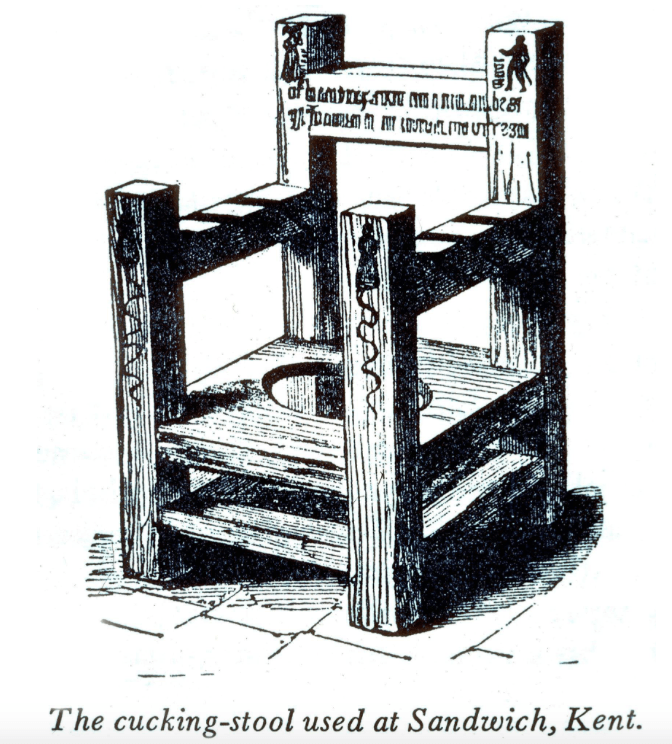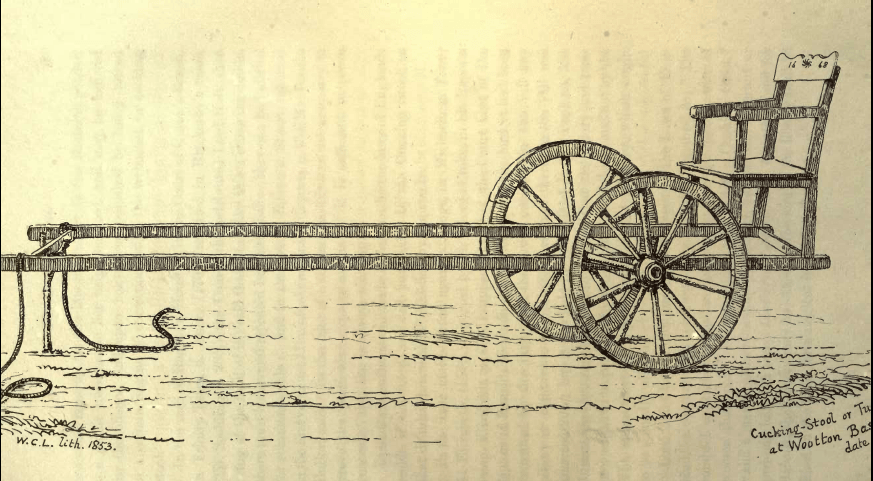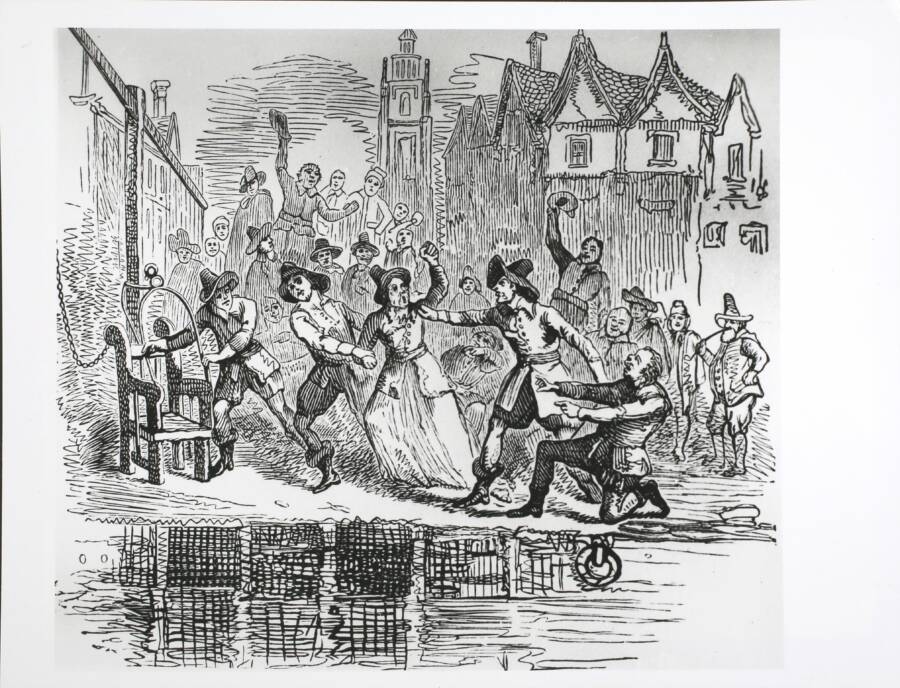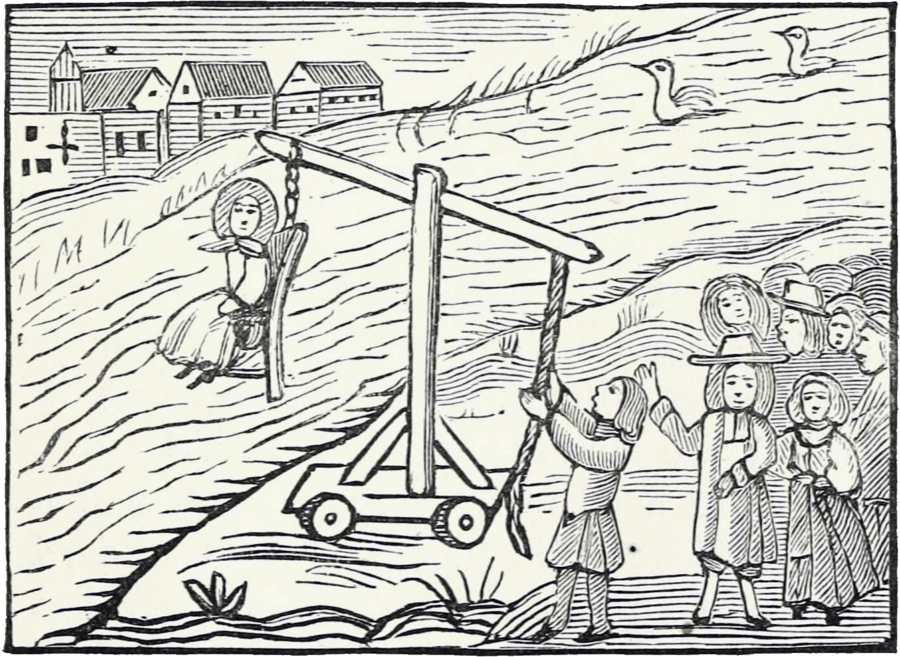Cucking stools were used in medieval Europe to punish and silence people — mostly women — who were accused of crimes like gossiping or talking too loudly.

Oxford UniversityA cucking stool from Sandwich, Kent, which resembles a commode.
We probably all know someone we consider a public nuisance: an outspoken, angry person who constantly disagrees and argues with others. In Anglo-Saxon countries from the Middle Ages to the 19th century, people like them were called “scolds.” And many of these scolds — mostly women — were punished in appalling fashion with the cucking stool.
Scolds, whether they were women accused of being bad wives or speaking out of turn, were affixed to cucking stools and paraded around the town. This punishment was meant to be humiliating — so humiliating that the so-called scolds would learn their lesson.
When The Cucking Stool Was Used And How It Worked
During the Middle Ages, outspoken women — and sometimes, but rarely, men — were in danger of being labeled “scolds.” This term applied to anyone who disturbed the peace, fought loudly, gossiped, slandered others, or spewed blasphemy.
Someone accused of being a scold could be disciplined in a number of ways but one prominent punishment was with a cucking stool. This stool — also called a scolding stool or a stool of repentance — was basically a chair that they could be strapped into.
Sometimes commodes or toilets were used. Indeed, the Londonist notes that the verb “to cuck” meant to “void excrement.” This, it seems, would be another layer of humiliation for the accused scold.

MiddelburyAn illustration of a cucking stool made in the 19th century.
Whether a mere chair or a toilet, the cucking stool had a simple purpose: to humiliate. The New York Times recounted the history of cucking stools in 1881, claiming that the device was “convenient” and “harmless” and writing:
“[The scold] was only placed in it…and exposed outside of her house or in some other place, for a given time and so left to the gibes and insolent remarks of the crowd.”
The point was to use morality to silence scolds, The New York Times explained, and when mere stools weren’t enough, medieval people added wheels and dragged them through town.
Later, cucking stools became frequently mixed up with ducking stools. But the two forms of punishment are actually quite different.
Cucking Stools Vs. Ducking Stools
Though cucking stools were a popular form of punishment in the Middle Ages, ducking stools emerged later, probably during the Tudor Era. Like cucking stools, they punished scolds. And like cucking stools, they involved strapping the offender into a chair.
But that’s where their similarities end.

Hulton Archive/Getty ImagesA woman being dragged toward a ducking stool in Ipswich, Suffolk, England, circa 1600.
Ducking stools were like cucking stools with one important difference. Rather than display a scold to her fellow townspeople or parade her about, they affixed scolds to chairs at the end of a long pole, made of iron or wood, and dunked him or her in the water.
Those punished in cucking stools were often forced to have a bare head and feet, which could be cold and uncomfortable. But those punished with ducking stools often suffered shock or even drowned.

Wikimedia CommonsIllustration of a ducking stool from an 18th century chapbook.
Women were punished with ducking stools in England, Scotland, and even colonial America, from the 17th century up until the 19th century. According to Smithsonian Magazine, surviving accounts of ducking stools describe how women were punished for various offenses. One was punished in 1694 for “daily making strife and discord amongst her neighbors.”
The last woman known to be punished with a ducking stool was Jenny Pipes. In 1809, she was mounted on a ducking stool in the town of Leominster, England.
Pipes was punished for allegedly speaking ill of her husband, but according to an eyewitness, the ducking stool didn’t seem to deter her. Smithsonian Magazine writes that Pipes “spewed oaths and curses on the magistrates” as the townspeople gathered to watch her punishment.
Silencing Women With Torture And Public Humiliation
Punishing people — usually women — with cucking stools or ducking stools had more than one purpose. It obviously meant to punish scolds and discourage their behavior, but it also sought to act as a warning for others.
As Marion Gibson, a scholar of Renaissance and magical literature at the University of Exeter, told Smithsonian Magazine: “There’s an element of frightening other women… It makes other women silent, too: women who stand back, women who don’t feel able to say, ‘This is wrong.'”
She added: “If you silence one woman in that very public way, you silence all women.”

Wikimedia CommonsThe ducking stool at Leominster, Herefordshire, England — last used in 1809.
As such, it’s easy to trace a line between cucking and ducking stools and the tests and punishments that women later faced as “witches.” However, Gibson and others note that ducking stools should not be mixed up with swimming tests. Ducking stools punished scolds; swimming tests sought to test if someone was a witch by throwing them in the water.
“Ducking a scold is a punishment. Swimming a suspected witch is a test,” Gibson told Smithsonian Magazine. “It’s a different part of the process.”
In the end, cucking stools, ducking stools — as well as the ways people tested women to see if they were witches — all seem to have something in common. They targeted women who didn’t toe the line, women who dared speak loudly in a time when they were expected to be subservient.
After reading about cucking stools — and ducking stools — explore different types of medieval executions that will make you glad you live in the modern world. Then, read more about the history of the rack, another torture device from the Middle Ages that will turn your stomach.





